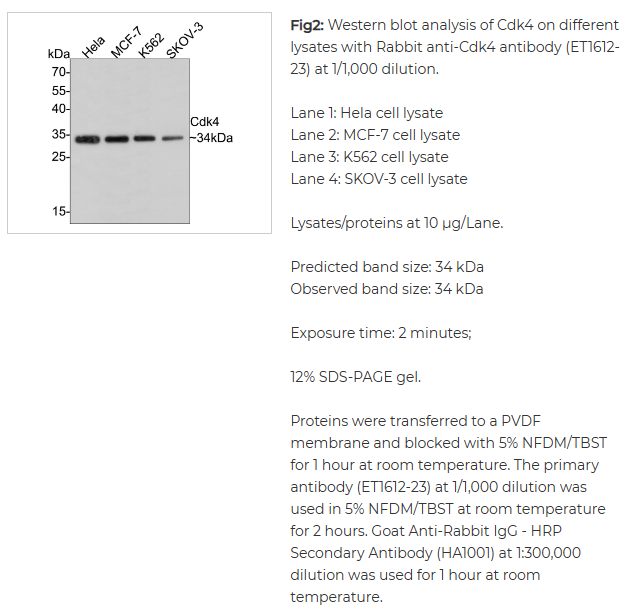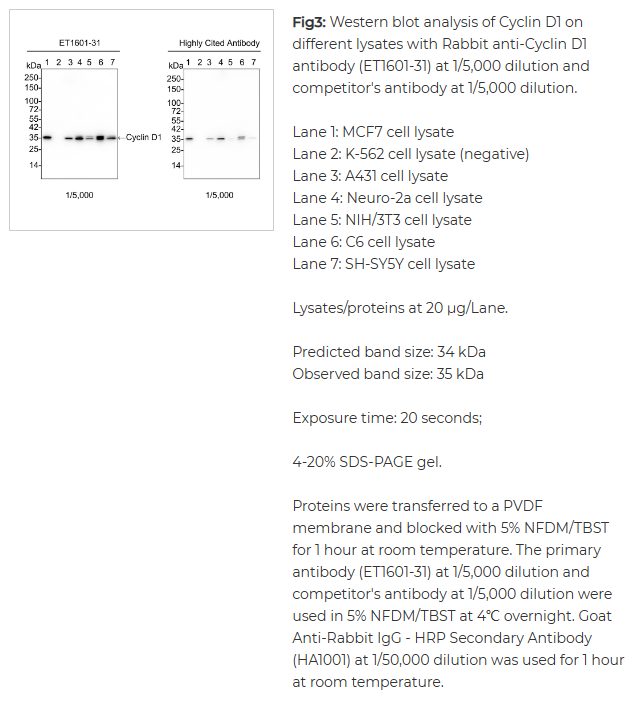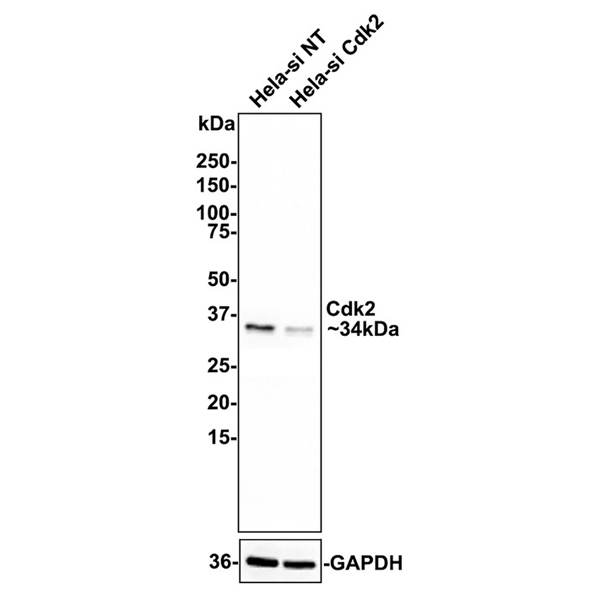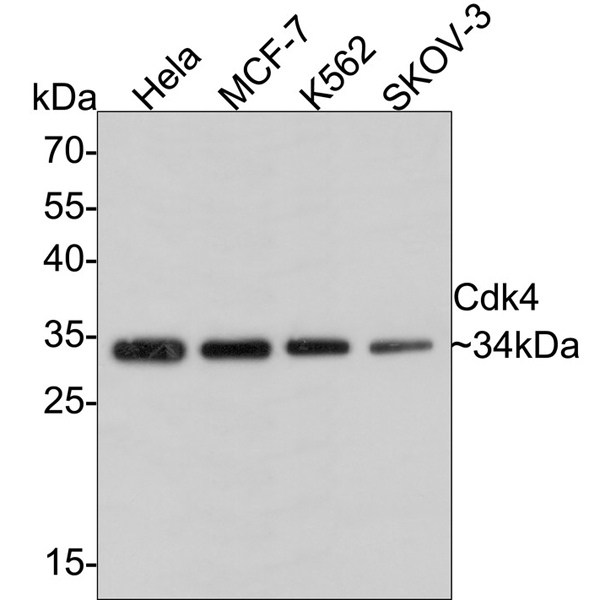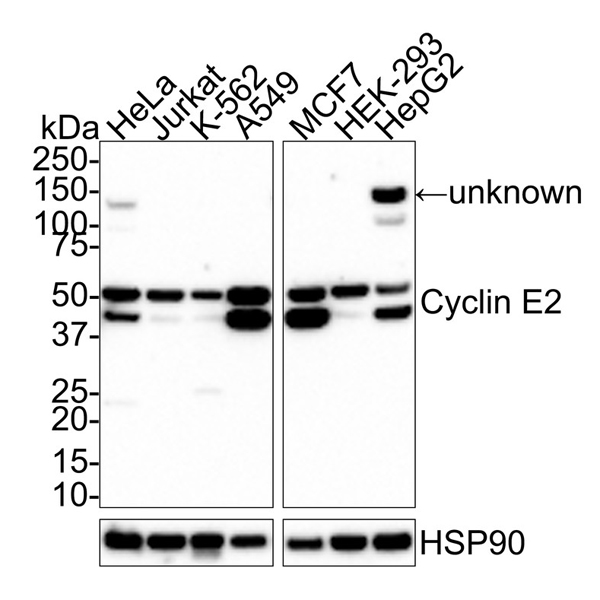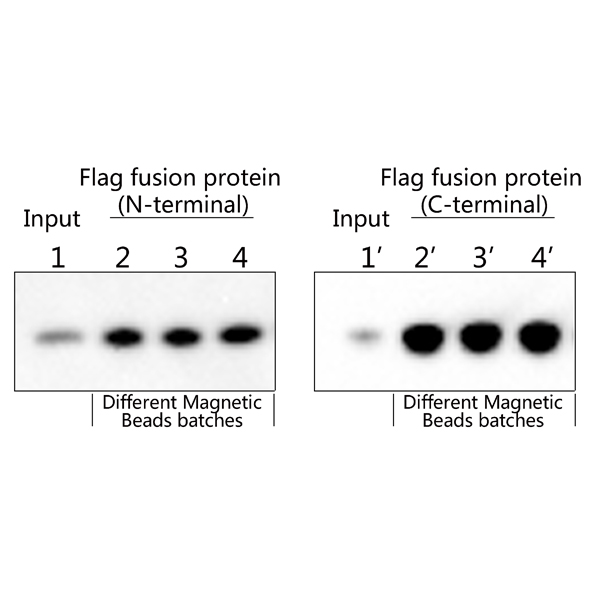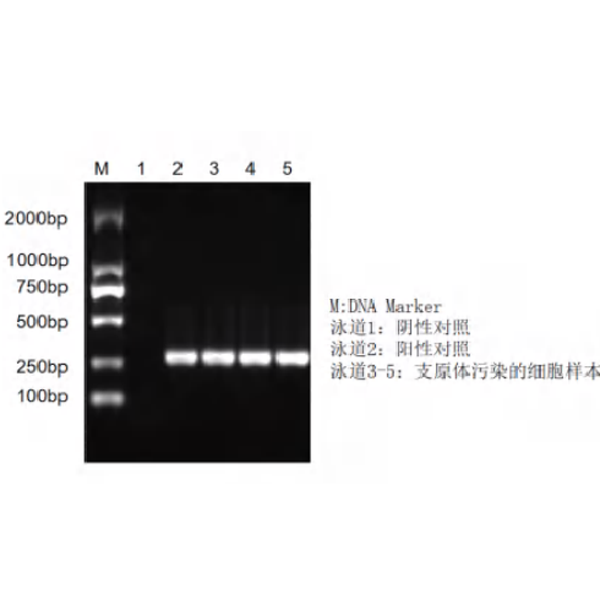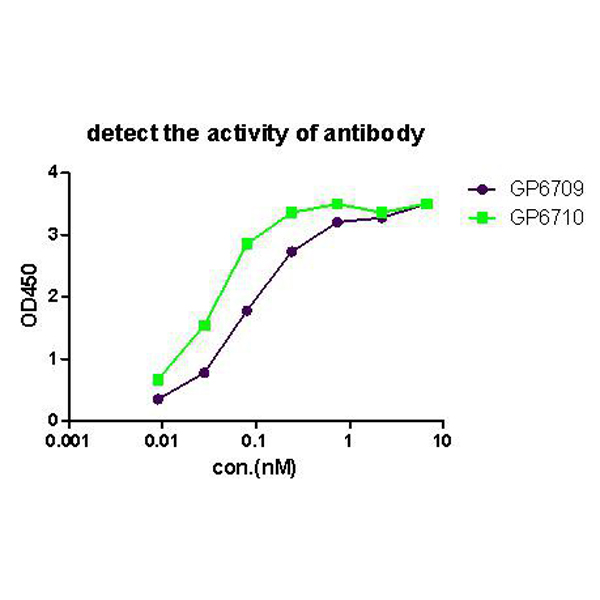| Cdk2[ET1602-6] | 30µl | WB,IF-Cell,IF-Tissue,IHC-P,IP | Human,Mouse,Rat | Predicted band size: 34 kDa |
| Cdk4[ET1612-23] | 30µl | WB,IF-Cell,IF-Tissue,IHC-P,IP | Human,Mouse,Rat | Predicted band size: 34 kDa |
| Cdk6[ET1612-3] | 30µl | WB,IF-Cell,IF-Tissue,IHC-P,FC | Human | 37 kDa |
| Cyclin A2[ET1612-26] | 30µl | WB,IF-Cell,IF-Tissue,IHC-P | Human,Mouse,Rat | 49 kDa |
| Cyclin D1[ET1601-31] | 30µl | WB,IF-Cell,IF-Tissue,IHC-P,IP,FC | Human,Mouse,Rat | Predicted band size: 34 kDa |
| Cyclin E1[ET1612-16] | 30µl | WB,IF-Cell,IF-Tissue,IHC-P | Human,Mouse | 47 kDa |
| Cyclin E2[M0407-15] | 30µl | WB,IF-Cell,IHC-P | Human,Mouse,Rat | Predicted band size: 47 kDa |
| HRP Conjugated Goat anti-Rabbit IgG[HA1001] | 100µl | WB,ELISA,IHC-P | Rabbit |
|
| HRP Conjugated Goat anti-Mouse IgG[HA1006] | 100µl | WB,ELISA,IHC-P | Mouse | |
